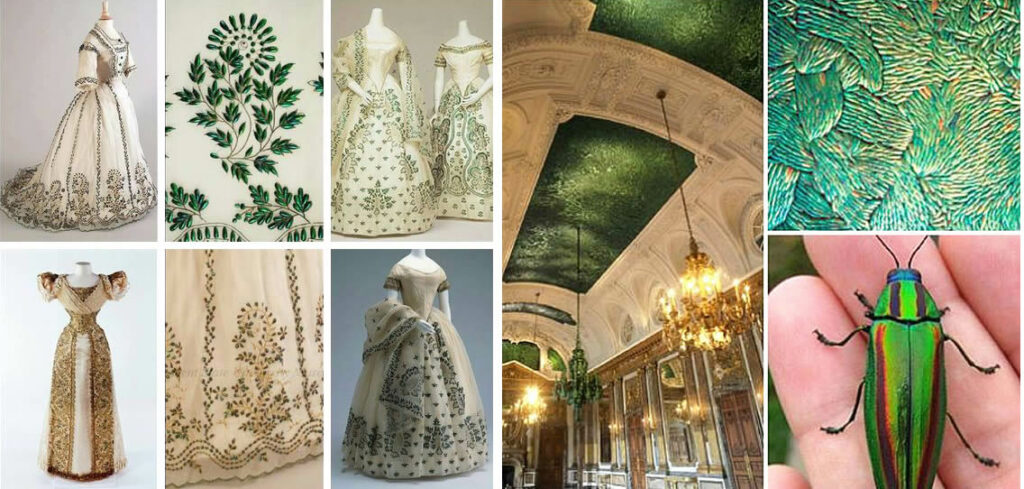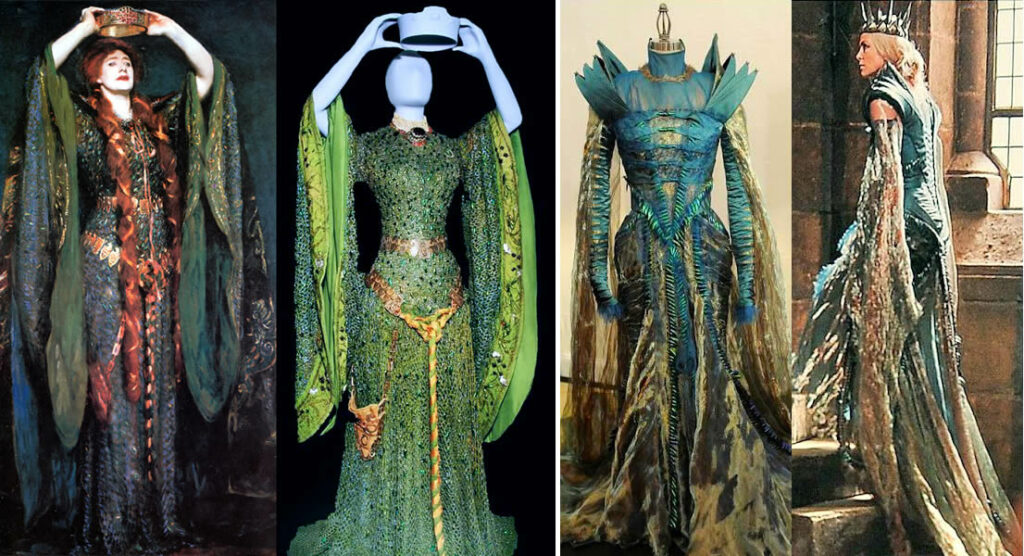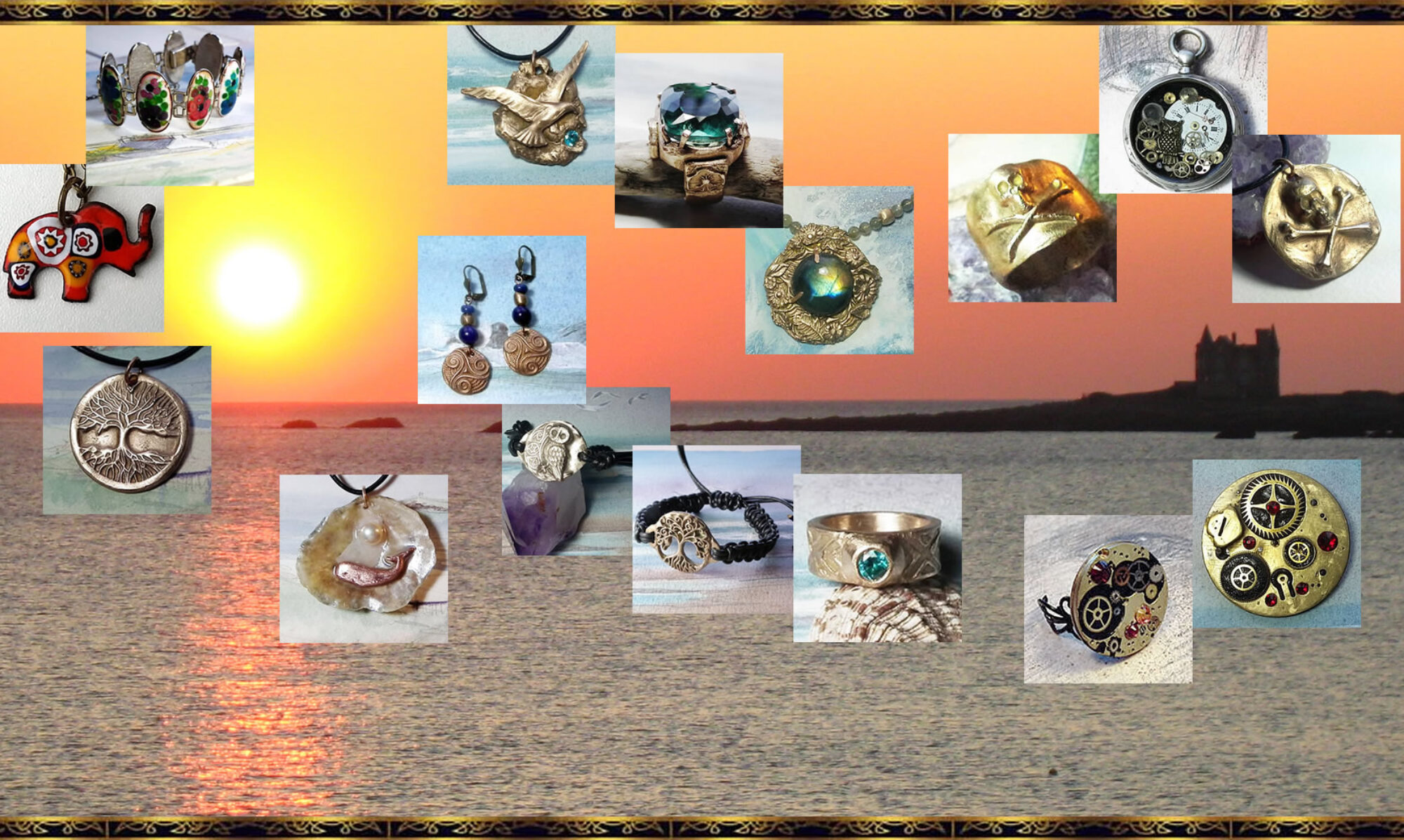
Asian beetle elytras have been used to embellish textiles in Asia for centuries. In Victorian England, elytra embroideries were added to decorate clothing and accessories. They are still used today to embellish clothing and to make jewelry and other decorative items.
These beetles are not killed for their elytras, they are bred and farmed for their larvae which develop in the wood, take on its fragrance and are consumed in Asia. The elytra are collected after the natural end of their life (lasting 3 to 4 weeks) which occurs after fertilization for males and egg laying for females
The elytras are made of chitin, like our hair, they last very long and do not lose their color .
A camera can’t render the glittering depth of color of these wings. They are green, but some have coppery, golden tones and others have blue reflections. The light plays on the wings and reflects in the “layers” of colors. They look like emeralds

Their color does not come from a crystal thickness like that of a gemstone , Reflections are created when the wings are moved, the colors are deep and changing and change with the angle. Their shiny metallic coloring is due to a phenomenon called interference and occurs in the physical structure of the insect’s chitin. Several layers of cuticle are composed of tiny gaps that allow light waves to strengthen, weaken or eliminate each other. The interference colors are not static, but vary according to the movement of the light rays. The colors vary from dull bronze to copper, emerald, blue or violet as the light changes. 
Right dress of the evil Stepmother in Snow White and the Hunters (2012 film).
